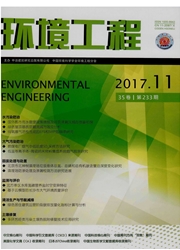

 中文摘要:
中文摘要:
针对矿化垃圾生物反应床处理渗滤液的堵塞问题,研究并探讨了堵塞原因和堵塞治理、预防措施。结果表明:渗滤液中有机悬浮物在矿化垃圾表层的截留与吸附是造成矿化垃圾反应床堵塞的主要原因之一。在该文试验条件下,二级串联工艺中,第一级反应床的表层总有机碳含量随时间的延长而增加,总有机碳从最初的9.4%提高到发生堵塞时的10.7%;而中部垃圾的总有机碳含量则维持在9.4%~9.5%。第二级反应床表层和中部垃圾的总有机碳分别维持在9.2%~9.5%和9.0%~9.4%,未发生明显变化。通过矿化垃圾累计降解污染物的量,提出了矿化垃圾极限负荷和临界负荷的概念。
 英文摘要:
英文摘要:
The blockage mechanism when treating leachate by the aged-refuse-based reactor was studied based on the relationship between the total organic carbon(TOC) in the aged refuse and time. It was considered that the blockage of the aged-refuse-based bioreactor may be contributed to the adsorption and interception of the organic suspended substances in the leachate. In two stage aged-refuse-based reactor, the TOC of surface layer in the first stage reactor increased from 9.4% to 10.7% with time, and the TOC of middle part maintained between 9.4% and 9.5%. The TOC of surface layer and middle part in the second stage reactor was in the range of 9.2%~9.5% 和 9.0% ~9.4% , respectively. Based on the total amount of degraded pollutant by aged refuse, it was determined that limit load and critical load could be used as the evaluation indexes to prevent the blockage of the aged refuse bioreactor.
 同期刊论文项目
同期刊论文项目
 同项目期刊论文
同项目期刊论文
 Stepwise superposition approximation approach for analytical solutions with non-zero initial concent
Stepwise superposition approximation approach for analytical solutions with non-zero initial concent 期刊信息
期刊信息
